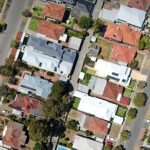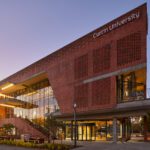The detection of four short bursts of radio waves, probably arising from highly energetic explosions from billions of light years away, has now laid doubts to rest about the authenticity of a heatedly debated previous signal, known as the Lorimer burst.
Furthermore, these Fast Radio Bursts might enable us to measure the amount of normal matter in the Universe by counting the number of electrons between us and the origin of the bursts.
The international team of researchers from the UK, Italy, the USA, Germany and Australia, whose paper was recently published in the journal Science, rule out any terrestrial sources for these signals but conclude that they must stem from when the Universe was only half its current age.
Curtin University co-author of the paper Dr Ramesh Bhat said the burst energetics suggest that they originate from extreme astrophysical events involving relativistic objects such as neutron stars or black holes.
The radio bursts – detected in a tiny fraction of the sky using the CSIRO Parkes 64-metre radio telescope – last for just a few milliseconds and the furthest one was 11 billion light years away.
“Astonishingly, our findings also suggest that there should be thousands of these bursts striking the Earth every day,” Dr Bhat said.
The study’s lead author, Dan Thornton, PhD student at the University of Manchester and CSIRO, explained “A single short radio burst of unknown origin was detected outside our galaxy about six years ago but no one was certain what it was or even if it was real, so we spent years searching for more of these – until we found four more bursts, removing any doubt that these signals are real.”
Swinburne University Professor Matthew Bailes thinks the most likely source of the bursts are cataclysmic explosions in the Universe’s most magnetic neutron stars, known as magnetars.
“Magnetars can give off more energy in a millisecond than our Sun does in 300,000 years and are a leading candidate for the bursts,” Professor Bailes said.
Dr Bhat underscores the importance of new observations with other radio telescopes and is optimistic about the future.
“We really need to understand the origin of these mysterious bursts and their underlying physics. Prompt follow-ups with next-generation class instruments such as the Murchison Widefield Array in outback Western Australia hold great promise for this,” he said.
The researchers say that a population of these Fast Radio Bursts at different stages of the Universe age would be an invaluable resource to weigh the normal matter in the Universe.
The institutions involved in the collaboration were the University of Manchester’s Jodrell Bank Observatory (UK), CSIRO, members of the ARC Centre of Excellence for All-Sky Astrophysics (CAASTRO) at Swinburne University of Technology (Melbourne) and Curtin University (Perth), West Virginia University (USA), the INAF-Cagliari Astronomical Observatory and Cagliari University (Italy), the NASA Jet Propulsion Laboratory (USA), and the Max-Planck Institute for Radio Astronomy (Germany).
Read the paper, ‘A population of fast radio bursts at cosmological distances,’ published in Science on 5 July, 2013. View an animation showing how the radio telescope was used to confirm a population of Fast Radio Bursts. Images of the Fast Radio Bursts can be used with the caption: Parkes radio telescope, which has been used to confirm a population of Fast Radio Bursts, is shown superimposed on an image showing the distribution of gas in our Galaxy. An artist’s impression of a single fast radio burst is shown located well away from the Galactic plane emission (credit: Swinburne Astronomy Productions).


